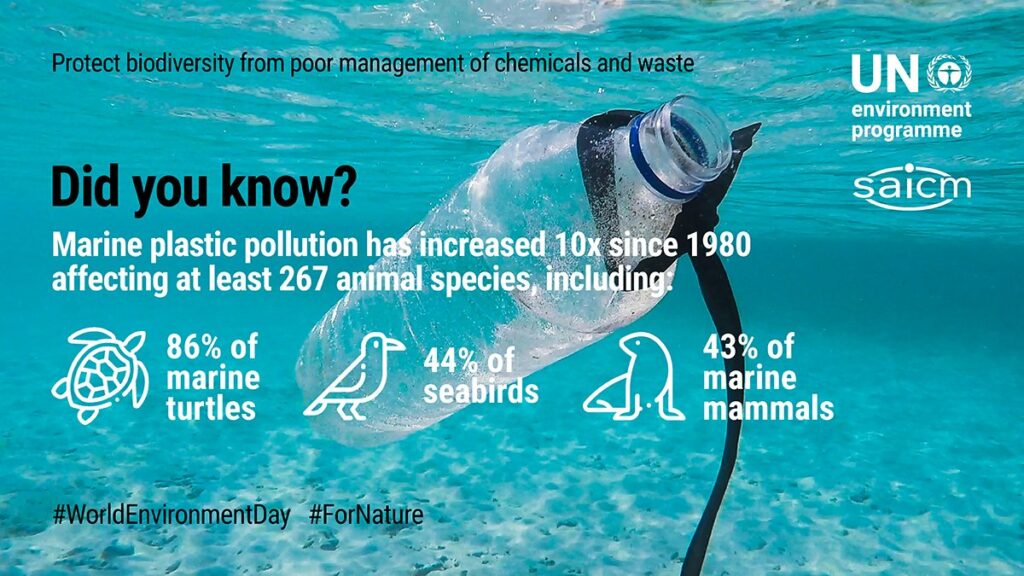
We have come a long way in protecting against chemical pollution
We have come a long way during the past few decades when chemical pollution was very visible and, in the EU, we now have much better protection in place against many harmful substances.
However, from 1950 to 2000, the global production volume of chemicals increased more than fifty-fold, and every day many new chemicals are being registered worldwide.
Exposure to harmful chemicals, both indoor and outdoor, may cause many health effects, including respiratory and cardiovascular diseases, allergies and cancer.
Human biomonitoring study reveals pesticide exposure
A large-scale human biomonitoring study conducted between 2014 and 2021 across five European countries found that at least two pesticides from agriculture were present in the bodies of 84% of survey participants. Pesticide levels were consistently higher in children than in adults.
Data collected from the same EU human biomonitoring study found that up to 100% of the people taking part from 11 EU countries were likely exposed to bisphenol A above safe health thresholds. This raises significant health concerns for the wider EU population. BPA can damage the human immune system at very low doses. This comes in addition to a number of previously discovered harmful effects on human health such as endocrine disruption, reduced fertility and allergic skin reactions.
Pesticide pollution threatens biodiversity
Pesticide pollution is one of the key drivers of biodiversity loss in Europe. In particular, pesticide use has caused significant declines in insect populations, threatening the critical roles they play in food production, in particular the pollination of most fruit and vegetable crops.
Zero pollution monitoring assessment
Our zero pollution monitoring assessment finds that Europe has achieved some progress in some areas:
- Good progress has been made towards reducing air pollution from industry, transport and homes — reducing the number of deaths linked to air pollution. At the same time, Europe has been maintaining and improving its bathing and drinking water quality and reducing the risk of antimicrobial resistance. Encouraging trends are also taking place in reducing pesticide use.
- Progress is slower in other areas, such as preventing excess nutrients and persistent chemicals from harming Europe’s freshwater and marine ecosystems, which is proving to be a significant challenge.
SDGs, Targets, and Indicators
| SDGs | Targets | Indicators |
|---|---|---|
| SDG 3: Good Health and Well-being | Target 3.9: By 2030, substantially reduce the number of deaths and illnesses from hazardous chemicals and air, water, and soil pollution and contamination | – Human biomonitoring study revealing the presence of pesticides in the bodies of survey participants – Bisphenol A exposure above safe health thresholds |
| SDG 6: Clean Water and Sanitation | Target 6.3: By 2030, improve water quality by reducing pollution, eliminating dumping, and minimizing release of hazardous chemicals and materials | – Maintaining and improving bathing and drinking water quality |
| SDG 11: Sustainable Cities and Communities | Target 11.6: By 2030, reduce the adverse per capita environmental impact of cities, including by paying special attention to air quality and municipal and other waste management | – Reduction in air pollution from industry, transport, and homes |
| SDG 12: Responsible Consumption and Production | Target 12.4: By 2020, achieve the environmentally sound management of chemicals and all wastes throughout their life cycle, in accordance with agreed international frameworks, and significantly reduce their release to air, water, and soil to minimize their adverse impacts on human health and the environment | – Reduction in pesticide use |
| SDG 14: Life Below Water | Target 14.1: By 2025, prevent and significantly reduce marine pollution of all kinds, in particular from land-based activities, including marine debris and nutrient pollution | – Prevention of excess nutrients and persistent chemicals from harming freshwater and marine ecosystems |
| SDG 15: Life on Land | Target 15.1: By 2020, ensure the conservation, restoration, and sustainable use of terrestrial and inland freshwater ecosystems and their services, in particular forests, wetlands, mountains, and drylands, in line with obligations under international agreements | – Prevention of biodiversity loss caused by pesticide pollution |
Copyright: Dive into this article, curated with care by SDG Investors Inc. Our advanced AI technology searches through vast amounts of data to spotlight how we are all moving forward with the Sustainable Development Goals. While we own the rights to this content, we invite you to share it to help spread knowledge and spark action on the SDGs.
Fuente: eea.europa.eu

Join us, as fellow seekers of change, on a transformative journey at https://sdgtalks.ai/welcome, where you can become a member and actively contribute to shaping a brighter future.






